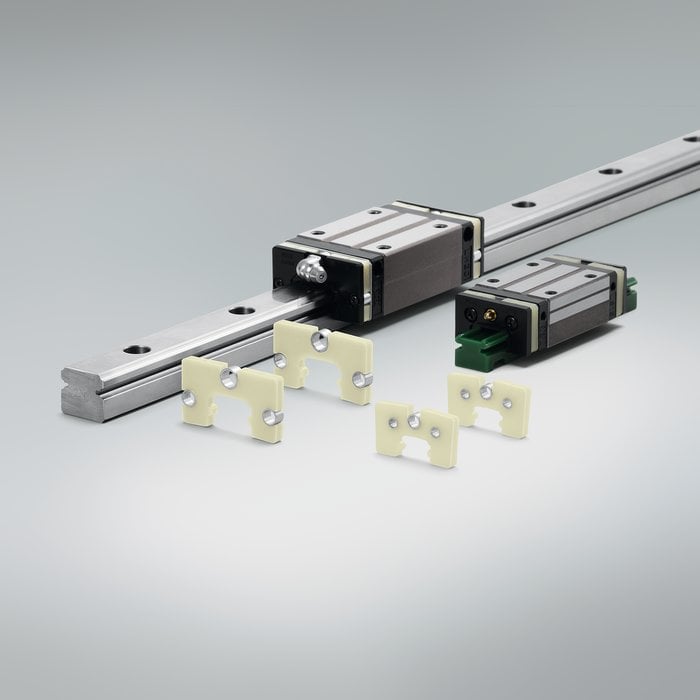www.industry-asia-pacific.com
03
'15
Written on Modified on
Linear guides
Twice as durable as previous generation models (LH/LS series), the new NH/NS linear guides have the same dimensions but feature a 30% higher basic dynamic load rating thanks to geometrically optimized ball grooves. They also support up to three times higher maximum speeds, from 150 to 300 m/min.

Furthermore, the high self-aligning capability of the ball slides on the rails has been maintained, through the X arrangement of rolling elements. This results in relatively low internal loads compared to an O arrangement. The linear guide therefore has a greater tolerance for inaccurate installations, without suffering a significant lifespan reduction. The new products can also optionally be used with the tried-and-tested lubrication units (NSK K1). Thus, it is not only simple to upgrade to the new series, it is also possible to use components from both generations in the same machine or system. In this case, the basic load rating of the earlier series must be observed, since the weakest link determines the lifespan of the system as a whole.
Another key benefit of the new generation is the option to operate them at much higher speeds, also without any design changes. Since they are fitted with high-speed end caps, they support up to three times higher maximum speeds than the predecessor series: instead of 100 m/min, NH/NS linear guides move at speeds of 150 to 300 m/min. At the same time, the new drives run more smoothly and more quietly thanks to a completely redesigned ball circulation system. The balls are now moved much more gently from the load zone into the recirculation cap.
The new NH/NS linear guides are suitable for precise and backlash-free operation in machining tools, medical technology, semiconductor manufacturing, packaging machines, robots and general handling.
The new linear guides tolerate much higher loads than former guides, which can be replaced by significantly more compact next-generation models that achieve the same service life. Instead of an LH30AN model, system designers can now select a more compact NH25AN that is 20% slimmer and has a 10% lower profile. It also weighs 30% less. Bulgan concludes «This option makes it easier for designers to create more compact, more light-weight and therefore also more cost-effective systems than before, without any loss in functionality».

